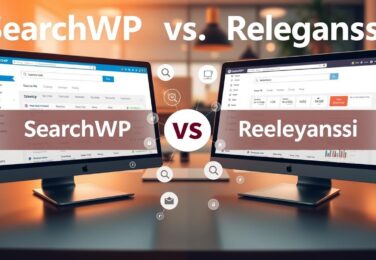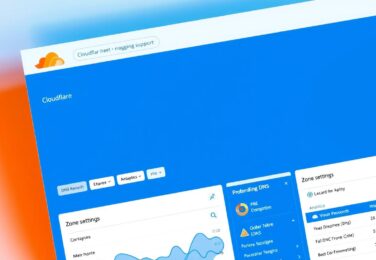The Power of Data: How Analytics is Transforming Businesses

Table of Content
In Melbourne, a small start-up was making a big impact in data analytics. Alex and Olivia, the founders, wanted to change how businesses make decisions. They aimed to help organisations in Australia find new opportunities and stay ahead.
As they explored data analytics, Alex and Olivia found a lot of potential. “We were amazed by the transformative power of data,” Olivia said. “It was more than just numbers. It was about finding stories that could take businesses to new heights.”
They saw how predictive analytics and data visualisation were changing the business scene in Australia. They knew sharing this power could lead to a new era of growth and innovation.
Key Takeaways
- Data analytics is revolutionising the way Australian businesses operate
- Organisations can gain invaluable insights and make data-driven decisions
- Cutting-edge tools and techniques are shaping the future of business in the digital age
- Predictive analytics and data visualisation are transforming decision-making
- Harnessing the power of data can drive growth and innovation
Unleashing the Potential of Data
Data is now key for modern businesses, helping them grow and make better decisions. By using data, companies in Australia can find new chances, improve how they work, and make smarter choices.
Data: The Fuel for Business Growth
Today, businesses that use data analytics and business intelligence are set for success. Data gives them insights that help with big decisions, better customer service, and more efficient operations.
- Identifying new market trends and customer preferences
- Optimising marketing campaigns and advertising strategies
- Improving operational efficiency and reducing costs
- Developing innovative products and services that meet evolving needs
The Rise of Data-Driven Decision Making
Data mining has changed how businesses make decisions. By using data insights, companies can make choices that lead to lasting growth and a competitive edge.
| Benefits of Data-Driven Decision Making | Challenges |
|---|---|
|
|
As the need for data insights grows, businesses that use data analytics and business intelligence will thrive. They’ll be ready for the changing world and achieve lasting success.
The Data Analytics Revolution
We’re seeing a big change in data analytics, thanks to more digital data, new tech, and a need for smart insights. This change is helping Australian businesses stay ahead and make better choices.
The data analytics field has grown fast in recent years. Predictive analytics and using big data have changed how we make business decisions.
Australian companies are now using data to find new patterns and predict trends. This helps them make choices that grow their business and profits.
This change is not just for businesses. It’s changing whole industries and markets in Australia. It’s making customer experiences better and supply chains more efficient.
“Data is the new oil, and analytics is the engine that powers modern business.”
We’ll look closer at what’s driving this change, the tools and tech involved, and how it’s helping Australian businesses stay ahead.
In today’s world, data is key to making smart decisions. The data analytics revolution is changing how Australian businesses work and succeed. By using data, they can find new chances, make better choices, and grow for the long term.
Data Mining: Unearthing Hidden Insights
In today’s world, businesses in Australia are using data mining to find hidden patterns and trends. This helps them make better decisions and meet customer needs. They can also develop more effective strategies.
Predictive Analytics: Forecasting the Future
Data mining is great for predictive analytics. It uses past data to guess what will happen next. This way, businesses can predict what customers will do and avoid risks.
For instance, a top Australian retailer might look at past sales and trends to guess what will sell well during holidays. They can then adjust their stock and marketing plans. This ensures they meet customer demands and make more money.
“Data mining is the process of discovering patterns in large data sets to help make better decisions.” – Usama Fayyad, Data Mining Pioneer
By using data mining and predictive analytics, Australian businesses can find valuable insights. These insights help them grow and succeed. They can prepare for market changes and improve how they work.
Harnessing the Power of Big Data
In today’s world, big data is changing the game for businesses. It offers new ways to understand data and make better decisions. But, dealing with so much data can be tough and needs a smart plan.
Overcoming Big Data Challenges
Handling big data can seem overwhelming. But, with the right tools and strategies, businesses can beat common hurdles. Good data management, like cleaning and storing data, is key. Also, finding insights in big data needs advanced analytics and a skilled team.
Scalable Solutions for Data Management
Big data needs flexible and scalable solutions. Cloud platforms and systems like Hadoop and Apache Spark are perfect. They help manage and analyse huge amounts of data efficiently. This flexibility lets businesses grow and adapt to new data needs.
| Big Data Challenges | Scalable Solutions |
|---|---|
| Data Volume | Cloud-based Platforms |
| Data Velocity | Distributed Computing (Hadoop, Apache Spark) |
| Data Variety | Data Integration and Transformation Tools |
By using these scalable solutions, Australian businesses can unlock big data’s power. This leads to growth and innovation. The future of business is in using big data well. Those who adapt will succeed in the data-driven world.

Data Visualization: Bringing Data to Life
In the fast-paced world of business, data is key to success. But raw data can be hard to understand. Data visualization changes this, making complex data easy to see and get. It’s changing how we use data to make smart choices.
Data visualization makes data clear and pretty. It uses special tools to turn data into graphs and charts that tell a story. This helps leaders understand their business better and share important findings with others.
The Benefits of Data Visualization
- Visuals help us get data faster and see patterns we might miss.
- It makes decision-making quicker and more informed.
- It makes complex info easy to share and understand.
- It grabs people’s attention and makes them want to learn more.
Unlocking the Power of Data Analytics
Data analytics is at the core of data visualization. It helps find hidden patterns and predict the future. When we add data visualization to analytics, the insights are even stronger. This helps businesses stay ahead of the game.
| Feature | Benefit |
|---|---|
| Intuitive Dashboards | Give a quick view of important data, helping leaders spot and fix problems fast. |
| Interactive Visualizations | Let users dive into data, change charts, and find new insights easily. |
| Automated Reporting | Make reports that are easy to look at and share, making communication smoother. |
The need for data-driven insights is growing. Data visualization is becoming more important. By using this tool, Australian businesses can make better choices and stay ahead in the market.
Machine Learning and Artificial Intelligence
Machine learning and artificial intelligence (AI) are changing data analytics. They automate tasks and find insights humans can’t. This helps businesses make better decisions and stay competitive. Let’s explore how these technologies are shaping data analytics.
Automating Processes with Machine Learning
Machine learning algorithms automate tasks and improve business processes. They predict maintenance needs and segment customers. This frees up people to work on important tasks.
By automating tasks, companies become more efficient. They make fewer mistakes and make decisions based on data.
AI: The Next Frontier in Data Analytics
Artificial intelligence is taking data analytics to new heights. AI systems can handle huge datasets and find insights humans can’t. They use natural language and computer vision to extract value from data.
This helps businesses make strategic decisions. It drives growth and innovation.
| Machine Learning | Artificial Intelligence |
|---|---|
| Automates repetitive tasks | Uncovers hidden insights from data |
| Identifies patterns and makes predictions | Enables more informed, strategic decisions |
| Enhances efficiency and reduces errors | Transforms the way we extract value from data |
Australian businesses can use machine learning and AI to their advantage. These technologies help unlock data’s potential. As they evolve, we’ll see more exciting developments in data analytics.

“The future of data analytics lies in the seamless integration of machine learning and artificial intelligence. These technologies are the key to unlocking the true value of our data and driving sustainable growth.”
Data Analytics
In today’s fast-paced business world, data is key to making smart choices. Data analytics is at the core of this shift, using advanced tools and techniques. It helps us find hidden insights, predict trends, and make strategic decisions for growth.
Mastering Statistical Modeling
Statistical modeling is the base of data analytics. It lets us dig into big data, spot patterns, and find connections. By using advanced stats, we can build models that forecast the future. This helps us make better decisions and avoid risks.
This method is super useful for things like predicting finances, understanding market trends, and guessing what customers will do next.
Harnessing the Power of Business Intelligence
Business intelligence (BI) tools work alongside statistical modeling. They give a full view of how a company is doing, helping leaders make choices based on data. BI tools mix and show data from different places, turning raw info into useful insights.
With interactive dashboards and reports, we can keep an eye on important metrics. We can spot areas to get better and plan strategies that match our goals.
| Data Analytics Techniques | Applications |
|---|---|
| Statistical Modeling |
|
| Business Intelligence |
|
By using data analytics, Australian businesses can stay ahead, innovate, and grow sustainably in our data-rich world.
Data Warehousing and Data Integration
In today’s fast-paced business world, managing data well is key. Data warehousing and data integration are vital for this. They help gather, store, and access data from many places. This way, leaders can make smart, data-backed decisions.
A good data warehouse is like a central hub. It brings together data from inside and outside the company. This lets businesses find insights they might have missed. These insights can then help make the company better and more successful.
- Streamline data management by consolidating information from disparate sources into a centralised data warehouse
- Facilitate seamless data access and integration, enabling informed decision-making based on a comprehensive view of the business
- Leverage the power of data analytics to uncover hidden patterns, trends, and opportunities for growth
As companies deal with more data, data warehousing and data integration are key. They help businesses use their data to their advantage. This makes data a strong tool for success.
“The true value of data lies in its ability to inform decision-making and drive strategic initiatives. Effective data management is the foundation upon which these insights are built.”
Data Science: The Multidisciplinary Approach
In today’s fast-paced business world, data is key for making smart decisions. Data science brings together stats, computer science, and special knowledge to unlock data’s full value. It’s a field that helps companies get the most out of their data.
Bridging the Gap Between Data and Business
Data scientists connect data to business, turning complex info into useful insights. They use data analytics and business intelligence to find hidden trends and offer advice. This helps guide the company’s strategy.
Data science covers several important areas:
- Statistical modelling and machine learning to find important insights in data
- Data mining and exploratory analysis to spot patterns and connections
- Data visualisation to show findings clearly and effectively
- Domain-specific knowledge to understand data in the context of business challenges
This approach helps companies make better, data-based choices. This can lead to better efficiency, customer service, and success.
The need for data-driven insights is growing. Data science is more important than ever. It helps bridge the gap between data and business, driving growth and innovation.
Real-World Applications of Data Analytics
Data analytics has changed how businesses work in many fields. It helps in retail, healthcare, finance, and manufacturing. Companies use it to improve customer service, make operations better, and stay ahead of the competition.
Retail: Personalising the Shopping Experience
In retail, data analytics is key to understanding what customers like. By looking at what they buy and their browsing history, shops can suggest products and tailor ads. This makes shopping more enjoyable and keeps customers coming back.
Healthcare: Improving Patient Outcomes
In healthcare, data analytics is changing how doctors treat patients. It helps them spot risks, predict diseases, and tailor treatments. This leads to better health outcomes and more efficient use of resources.
Finance: Detecting Fraud and Managing Risk
The finance world has always used data analytics to fight fraud and manage risks. It looks at transactions, market trends, and customer habits. This helps banks and financial firms make smart choices, reduce losses, and increase profits.
Data analytics is changing many industries and helping businesses succeed. As the need for data insights grows, companies that use data analytics and business intelligence will thrive. They’ll be ready to tackle challenges and seize new opportunities.
“Data is the new oil, and analytics is the combustion engine that drives business transformation.”
Ethical Considerations in Data Analytics
Data analytics is a powerful tool for business growth. But, we must think about the ethics of collecting, using, and protecting data. It’s important to keep data private, be transparent, and follow high ethical standards in data analytics.
In today’s digital world, data is key for businesses. We need to make sure we collect and use data responsibly. This way, we build trust and show we care about our customers and the community.
We’re always looking for new ways to use data analytics ethically. By balancing the benefits of data with privacy, we can make a better future. This future is sustainable, trustworthy, and inclusive for everyone.










